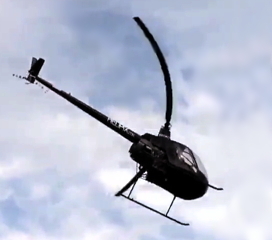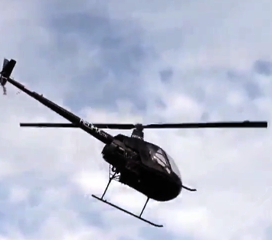Peter Mark Roget (1779–1869), author of the eponymous thesaurus, first described this illusion, hence known as the “Roget” or “Palisade” illusion.
His own explanation does not rhyme with current understanding. Carpenter detailed a geometrical derivation in 1868, which was recently formalized by James Hunt (2003).
I offer this more intuitive explanation: Essentially it is a sampling problem, since we only see partial glimpses (samples) of the spokes. Our visual system then tries to connect these pieces into a connected whole. Here the gestalt rule of proximity applies: for some locations, the neighboring spoke piece is nearer and is then assigned as continuation (apparent from the color change); this causes the apparent curvature. [This was Roget’s original approach, which he rejected. But the color tagging proves it.] This neighbor-misattribution is also the very reason for the reverse rotation in the wagon-wheel illusion in movies.


Note added 2009-04: Interestingly, this effect can also occur in “finish photos” of bike racing, where the spatio-temporal intricacies of the camera shutter “bend the spikes” – and quite strongly too. Furthermore, the Palisade illusion probably also causes an interesting shape distortion in archery, when capturing the string release with a photo just at the right time. Beautiful things can be learned from the web!
Note 2014-04: While looking for examples of aliasing, I noted the strong Palisade illution in a helicopter movie. I assume the video-chip sampling runs from top to bottom, and the rotor has different positions during that time.
Note 2014-12: The same mechanism underlies the “rolling shutter effect” which has its own Wikipedia entry.
Note 2019-08-07: Dennis Couzin suggested, quite rightly, that the motion had been much too slow; now corrected. He had many good ideas which are now incorporated. Thank you!
James L Hunt for pointing me to this illusion and providing material.
Roget PM (1825) Explanation of an Optical Deception in the Appearance of the Spokes of a Wheel Seen through Vertical Apertures. Phil Trans Royal Soc London 115:131–140
Carpenter WB (1868) On the Zoetrope and its antecedents. The Student and Intellectual Observer 1:427–444
Hunt JL (2003) The Roget Illusion, the Anorthoscope and the persistence of vision. Am J Phys 71:774–777
Wade NJ, Heller D (2003) Visual motion illusions, eye movements, and the search for objectivity. J Hist Neurosci 12:376–395